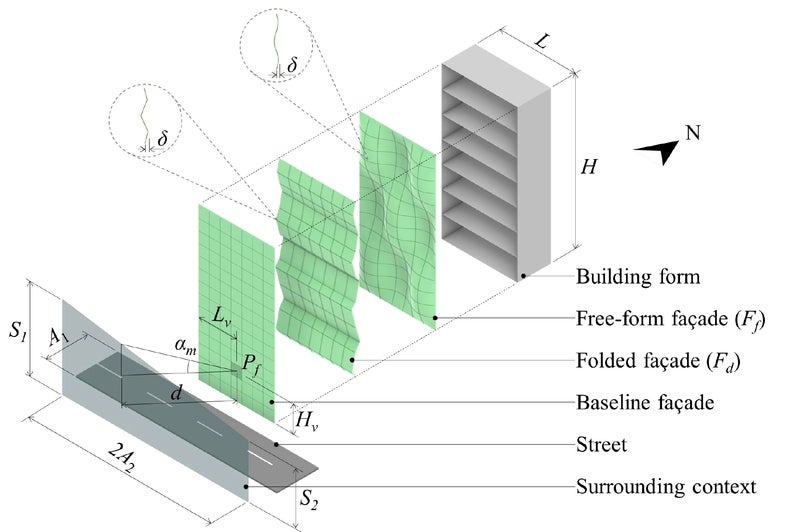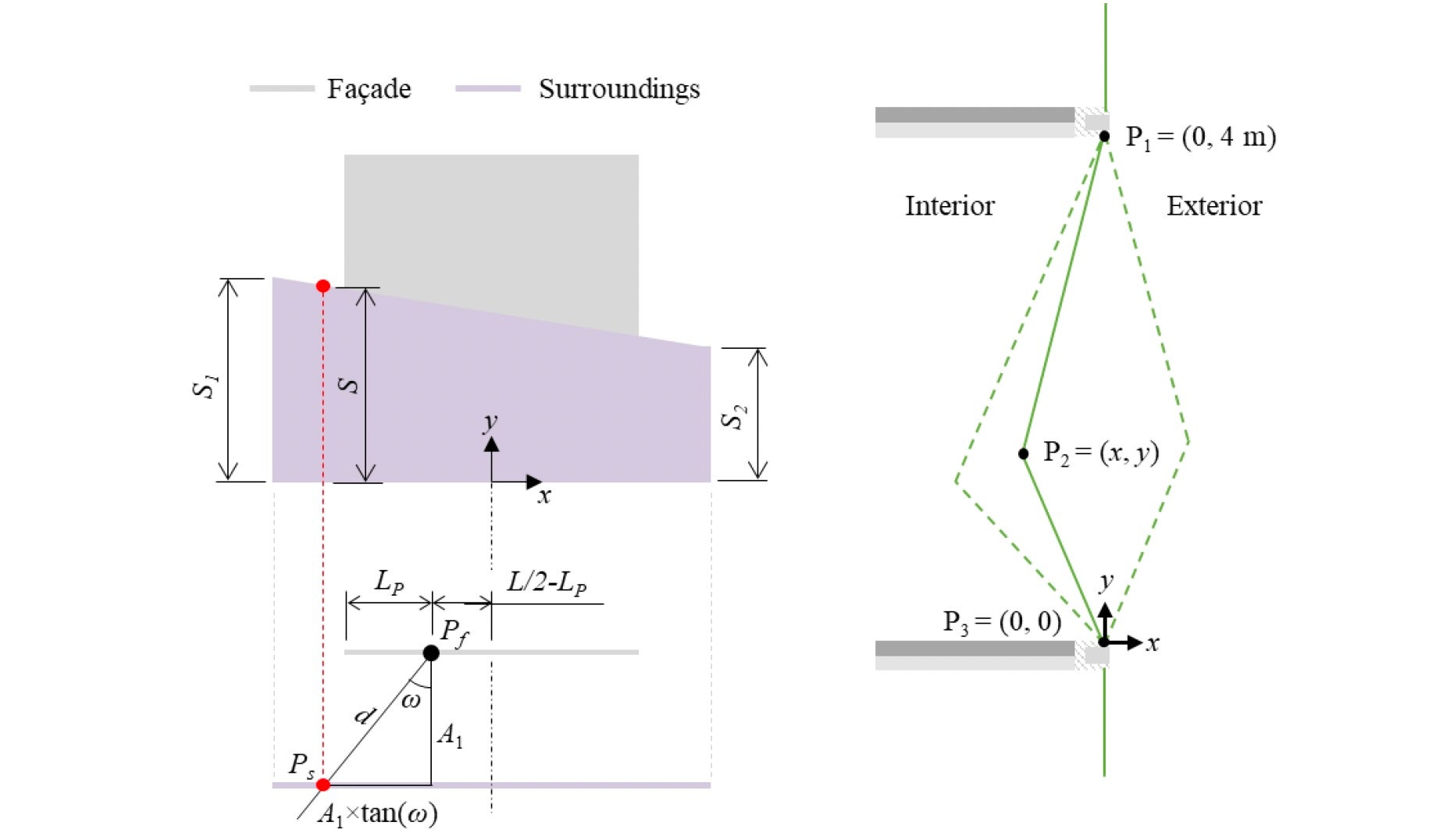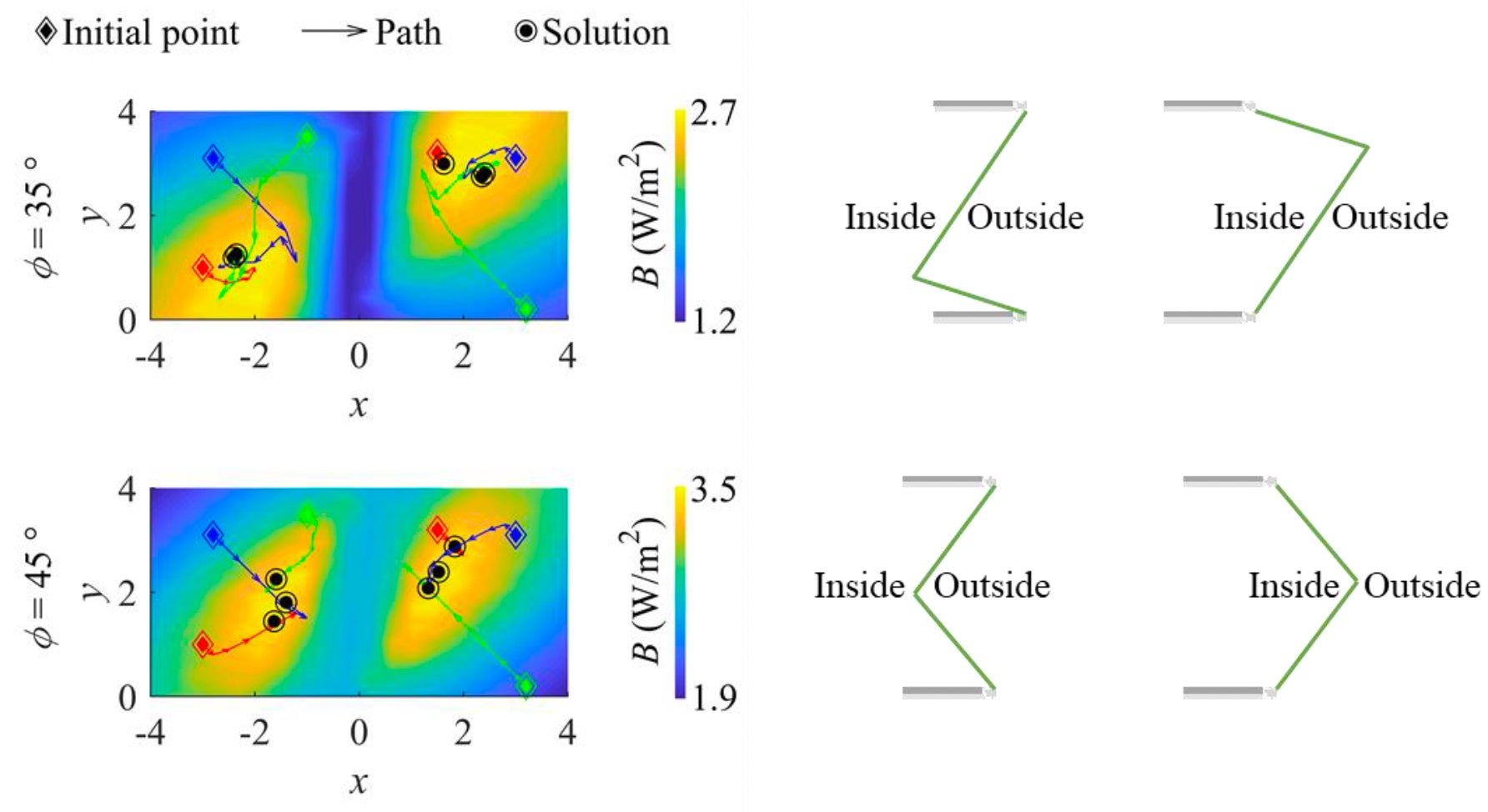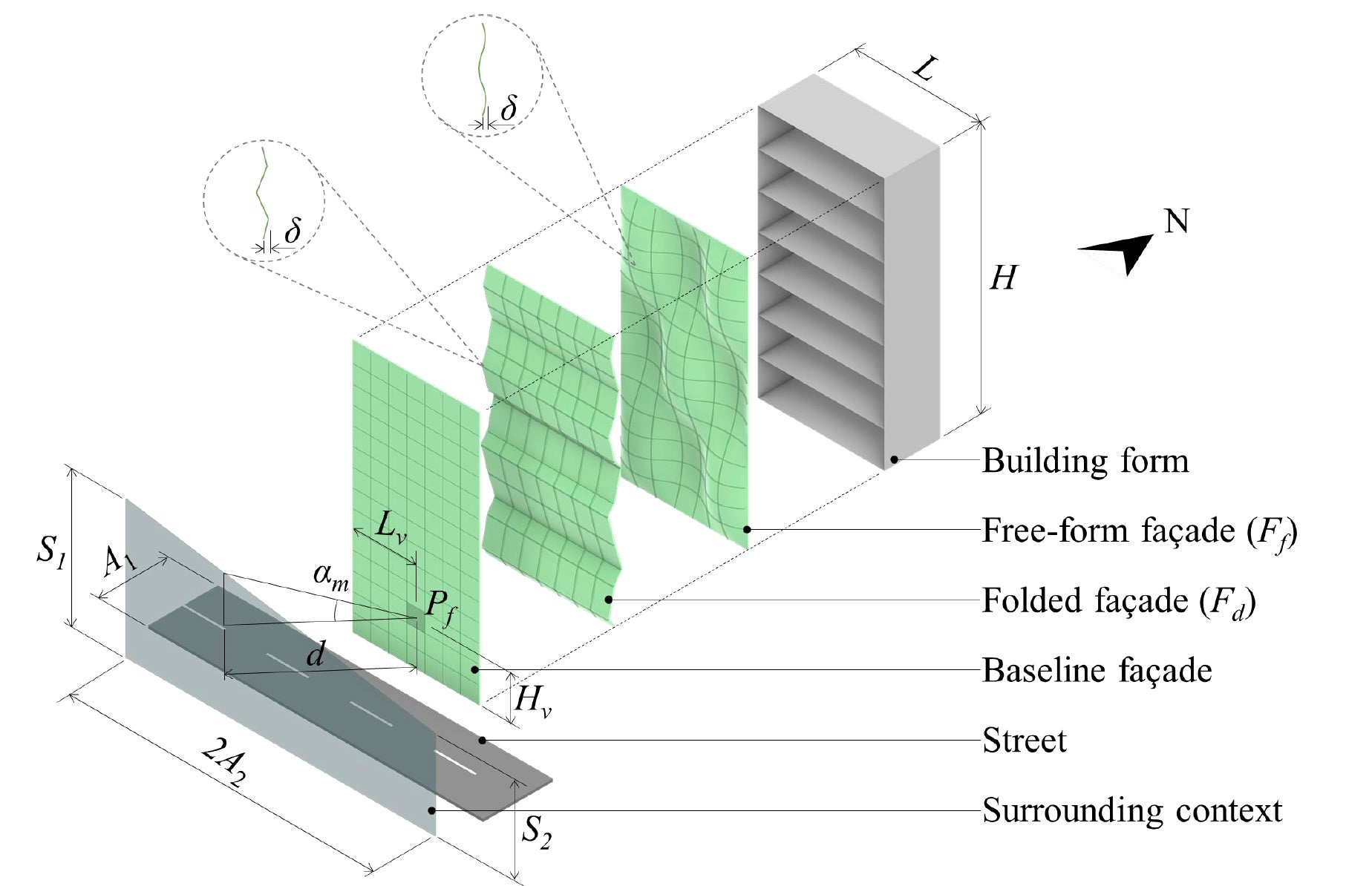To optimize flat, folded and free-form façades
Technology & Design
Natural Sciences and Engineering Research Council of Canada (NSERC)Description
Façade design optimization has a significant impact on promoting resilient solar harvesting methods in urban areas. Hooke-Jeeves algorithm demonstrates remarkable computational efficiency in optimizing folded façades, achieving the optimal outcome with only 88 function evaluations. However, the Hooke-Jeeves algorithm has limitations when applied to free-form façades by displaying noticeable instability and reporting an optimal value approximately 40% lower than Genetic Algorithms. Hooke-Jeeves algorithm has the possibility to conclude misleading outcomes as optimal points. This is mitigated by applying multiple initial points and verifying the outcomes with graphical optimization. In terms of energy performance, free-form façades have higher irradiation of up to 210 W/m2 compared to 180 W/m2 for flat façades. Optimal distribution of renewable modules on free-form façades increases energy generation by 14.3%. South-facing façades produce the highest energy at 2.4 W/m2, while west and east orientations generate the lowest at 0.8 W/m2.













